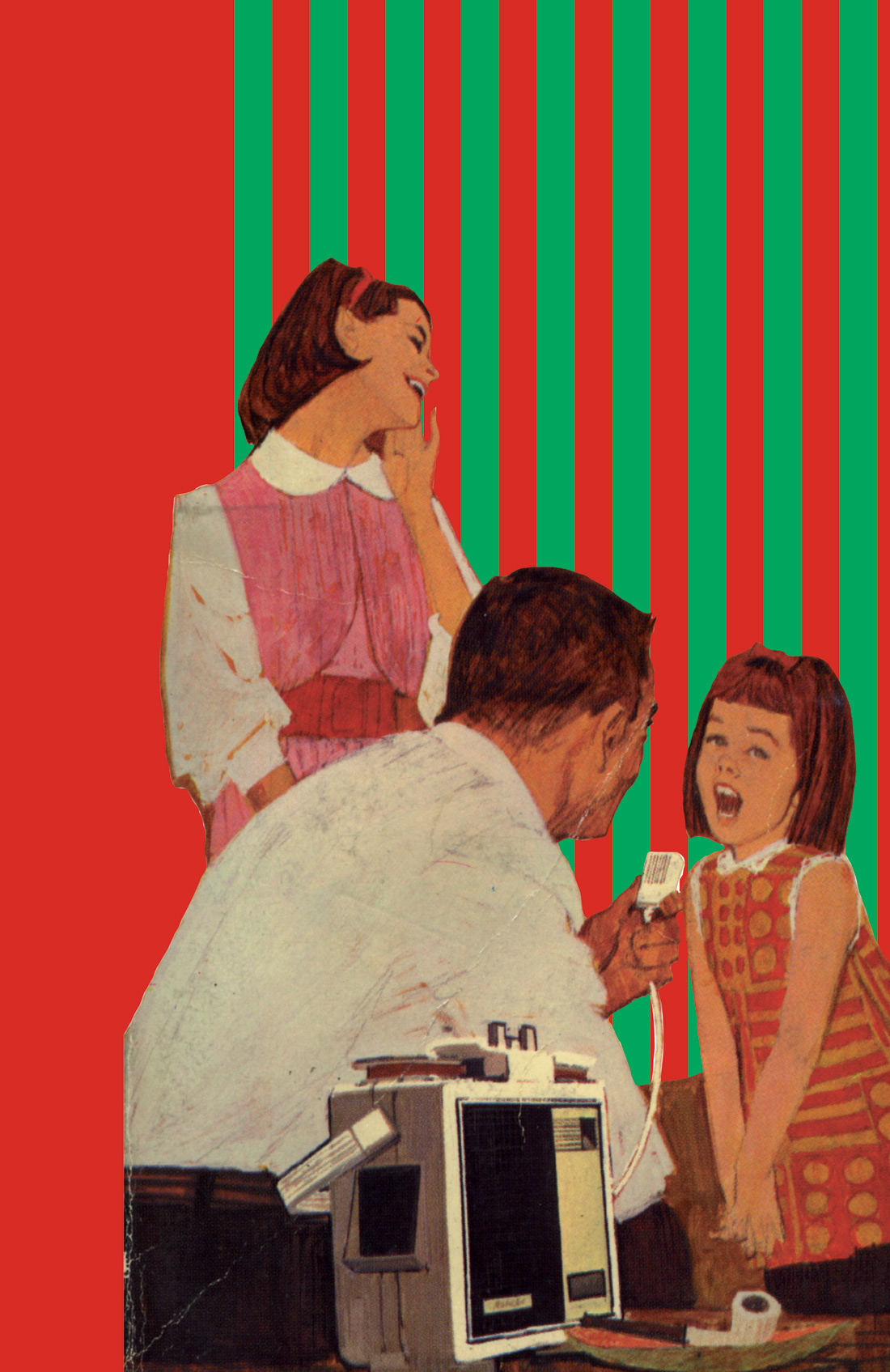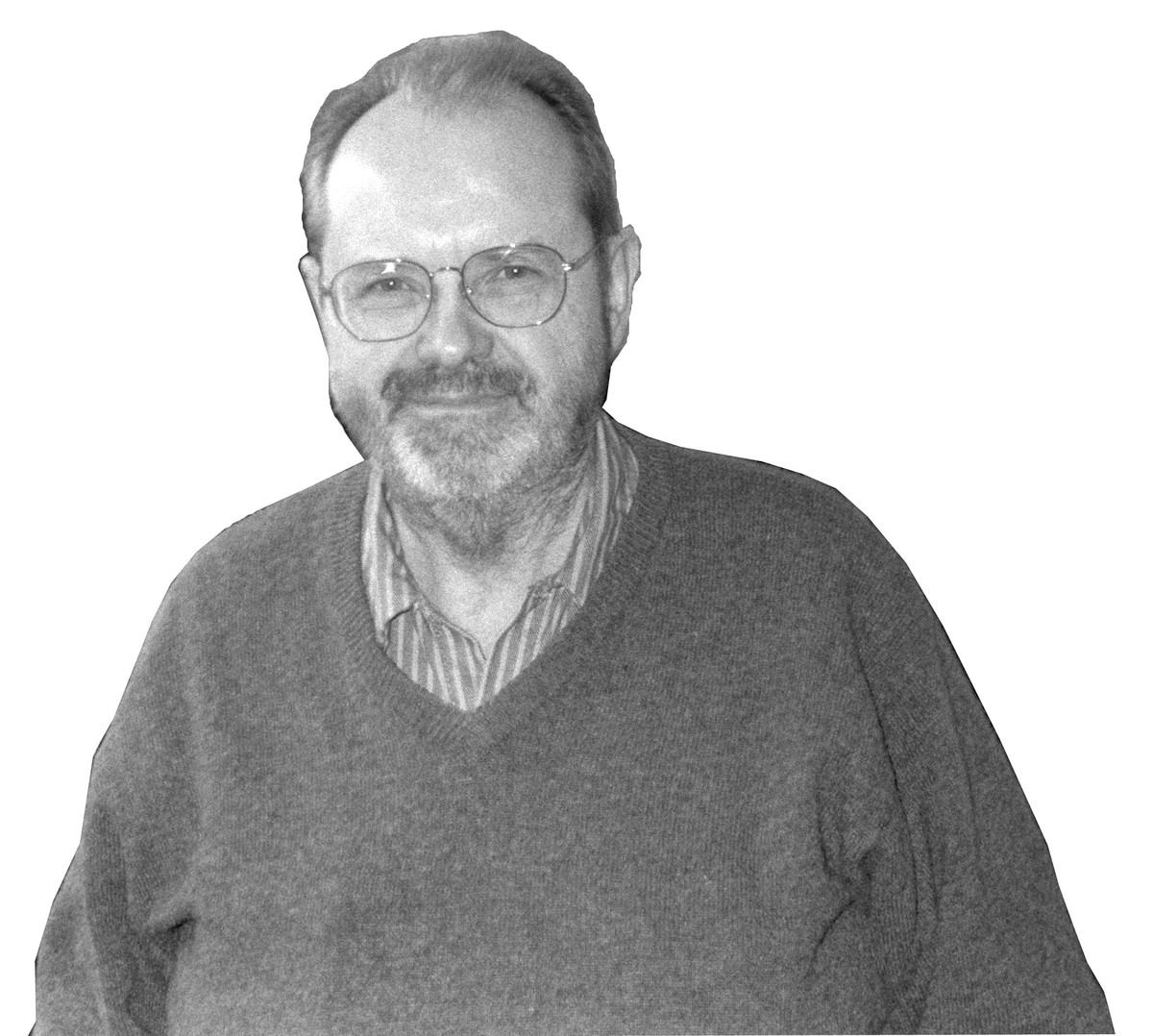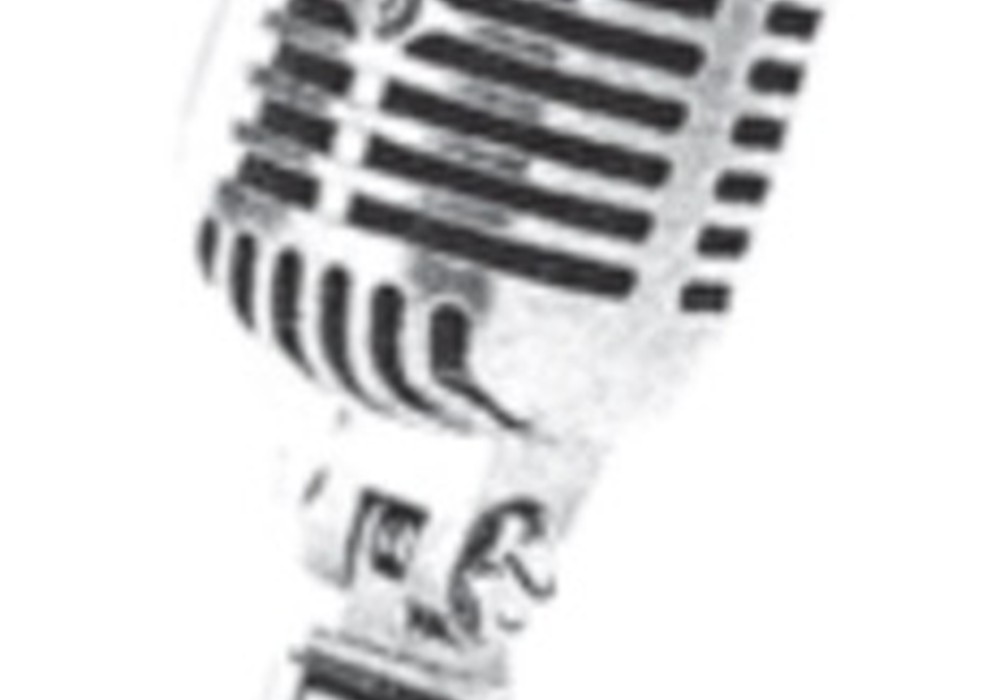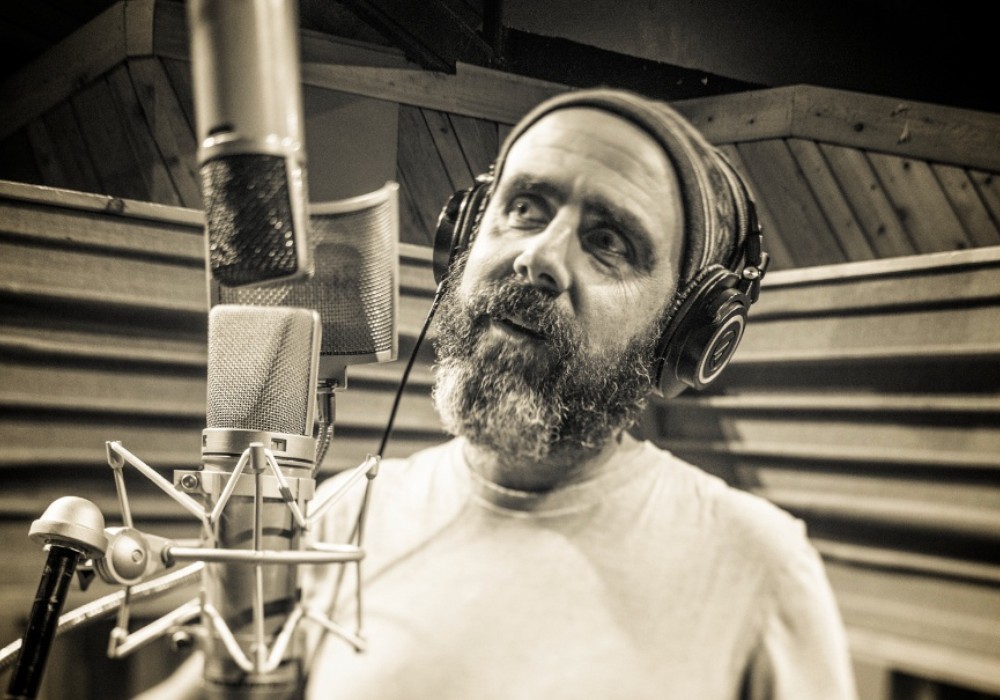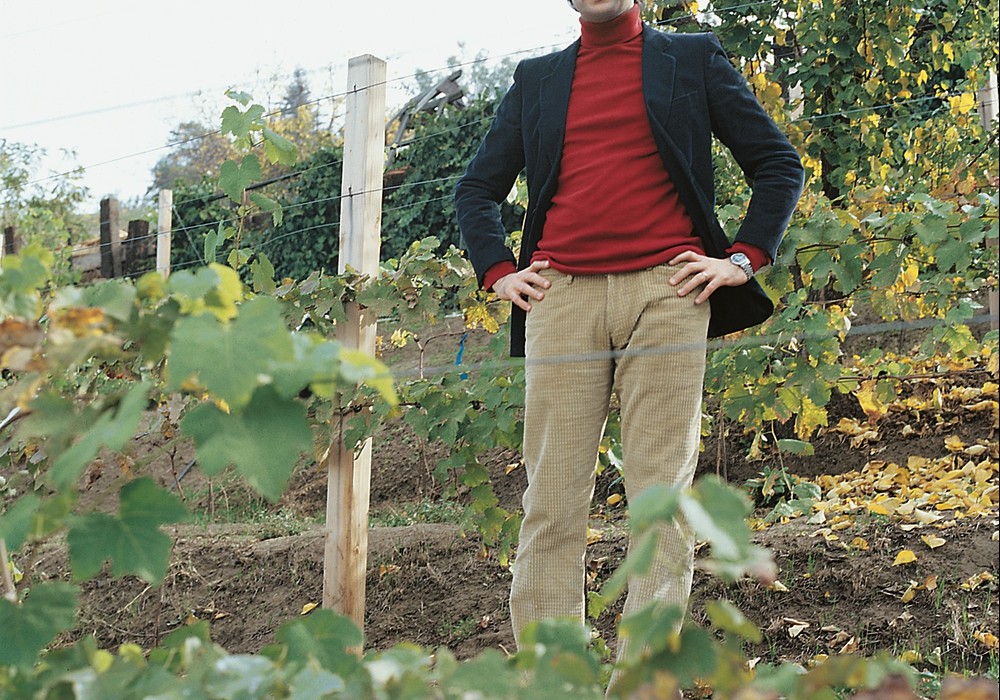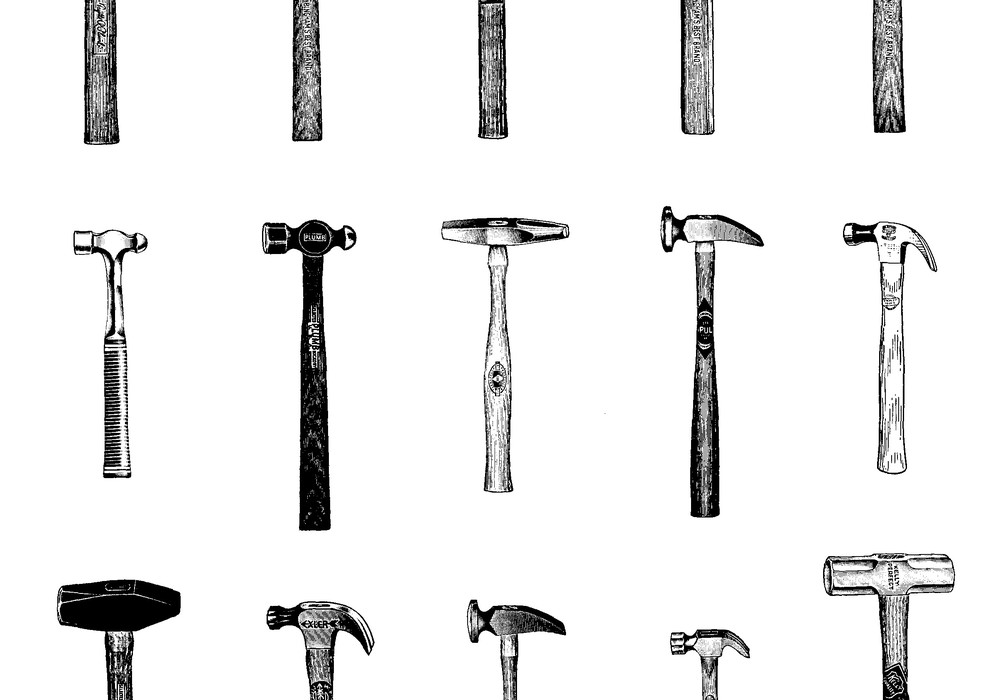While most subjects of Tape Op interviews have discussed their interest in recording, Phill Niblock thinks far more about reproduction of sound. He composes his pieces, which are often described as minimalist, for playback in large rooms with loud, clean reproduction systems. While he constructs his pieces as recordings, he prefers for people to hear them in controlled settings, rather than at home on their own stereos. I talked to Niblock when the organization Lampo brought him to Chicago to present both his films and music at Odum.
"I didn't even do recordings for a long time because I wasn't willing to give up that control, even though I didn't always have it in performance anyway. The idea of somebody playing the music in a small room with a boom box or with headphones wasn't real appealing. But it was, in the end, more important to get the music out."
"Almost no home systems have [enough] high-end and low-end response, and they don't have four speakers. People never play my music loud enough. One of the reasons I didn't want to do recordings in the first place is that I couldn't control the way it was played. If this [music] was played in an apartment house, you could never turn it up very loud, [and it would be in] a really small space. The CD of my music that I like best is "Music by Phill Niblock", with the string quartets and ‘Early Winter'. The string quartets you can pretty much hear what's going on, even at relatively low volume levels with a stereo system. ‘Early Winter' is totally impossible. If you play it softly, it's kind of a mush, and you really have to crank it up and have the space to go into it. It's very easy to distort, if you play it on a system that doesn't have enough guts."
"I've never listened to [his own music] in headphones. I don't really like headphones. I mean for a while when I was commuting, while I was teaching, I would carry either a radio or a Walkman. I don't like the experience."
"With my music it's more a matter of the sound system that we're playing back with. Full range has something to do with it. If you get speakers that either don't sound good or don't have very good frequency response - that's one thing. If they're not very powerful and you can't turn ‘em up enough, that's something else. It's easier and easier to find really good speaker systems for concert playback. It used to be really horrible, especially in Eastern Europe - horrible, bad sound systems. The architecture/sound has to do with every room, shape, and size - bodies in the room cause change too. Always the sound check is completely different from the actual concert, unless no audience comes. But if we get a big audience, a room that sounds really great empty can sound really flat and dead once you get a big audience. You will have, I suspect, much more sound from the speakers, and much less sound from the space. I've worked in some spaces where the speakers weren't that great but the sound was fantastic. There was a cathedral in Einhoven, Holland, where you had 4 relatively simple speaker systems in the huge space, but the sound was great because of the space itself."
"It's about engaging the whole room. I use speakers in the corner of the space, and sometimes along the wall, if I have 6 or [more]. There were actually other, bigger speakers we could have used within [Odum]. I didn't like [them] in a sense because they were too huge for the space, and especially the low ceiling. The sound in there was so much better than I would have expected with audience there - I was amazed. In that situation, you usually get much more of the sound coming out of the speakers. I faced the speakers so they bounced off of walls to diffuse the high frequency stuff a lot."
"It usually depends on the room and the situation. In Merkin Hall, which is a big recital hall, we had 6 Apogee boxes plus two subwoofers on the stage. We had two on the stage that were facing the audience pretty much directly, but on the side we had two and I did the same thing as [at Odum], I faced them so that they bounced off the wall. And then two on the balcony that were on the front of the balcony, also pointing at a wall, so it was very diffuse sound."
The music "has to do with acoustics. It has to do with architecture, because it changes drastically depending on the architecture. It has to do with the way in which it's reproduced - the [playback] sound system is very important. Ultimately it has to do with recording with very high quality."
"My music is basically about combining tones that are close together in pitch. As you get extremely small differences, like 1 Hz, they start modulating the volume, so you get amplitude modulation. The tone which results gets louder and softer, a very slow cycle. As the frequency of the tones gets further apart, it starts to make obvious beating - ah ah ah ah ah. Then you get faster beats, as the tones get further apart. Since the pieces are all constructed with many tones, which are usually different distances apart, you get a lot of irregular beats and segmentations. Because I'm working with instruments which have very complex timbres, all of those harmonic tones are doing the same thing, so that there becomes a real cloud of difference tones, which doesn't happen with a sine wave. A sine wave just gives you whatever the pure beats are."
"The pieces are made, basically, by recording. The first piece was a piece for organs, and it was simply a straight recording. I played stuff on a number of different registers in the organ, and the tones were out of tune because the registers change the pitch. It was a very straight recording - I think it was a mono microphone, an old Sennheiser microphone, and it still sounds good, actually. Then there was a series of pieces in which I dubbed back and forth, in '68, '69, '70. I dubbed back and forth creating multi-track pieces by doing the classic Les Paul, dubbing tapes from one generation to the next." While this primitive technique introduced noise, Niblock did not find it problematic. "The sound was always on and it didn't have any silences, and so a lot of that noise was not so bad. It was covered. Where you run into noise problems, hiss problems, is when you have long silences, low passages."
"My first tape recorder was a 1953 Masco. I think it cost a hundred twenty three dollars in 1953, which wasn't as cheap as it would be now, but still cheap. It was the first home machine, mono, 7 1/2" half-track. I still have it, sitting on a shelf." He bought it "to record. I was really interested in that phenomenon, being able to make recordings. I was doing a little bit of recording in space, with shitty microphones. I have a couple of tapes that I made of a friend's band at Indiana University that still play."
"I started doing something for multi-track, in '68. The first multi-track machines were expensive and hard to get to. And even in the early ‘70s, when I had access to the 16-track Ampex, that was a rare bird. I didn't think about [technical limitations]. I was doing whatever I was doing with whatever I could do it with. We had borrowed a mono Uher, and a friend gave me a grant of 500 bucks, and I bought a Revox, and I had those two machines to play with."
"In the early multi-track pieces, I would make a score based on the planning of the blocks of material that I had. For ‘A Trombone Piece', I used all A's and sharp A's. The lower octave is 55 Hz and then 57, 59, 61, adding 2 Hz a note. The middle octave is 110, and then 113, 116, 119, adding 3 Hz. The top octave is 220, 224, etc. When you play 57 Hz against the 113 Hz, it's like 114 to 113 essentially. You're getting incredibly small pitch differences with a very elegant construction, [with] all [of] these different very small pitch differences between the octaves as well as within the same octave."
"Then I started working with multi-track. I had an opportunity in the early ‘70s to work in a studio in Boston, Intermedia Sound - the company was run by a very close friend, Gerd Stern. It was a 16-track Ampex. I could record in the studio the tone samples on 2- track, edit that material, and then dub it to 16-track to match the score that I made. That was a really big improvement in the sound. In fact, the piece that we're playing tonight, for cello, was done in that studio on that equipment, [using] 8 tracks of a 16-track Ampex, mixed down to stereo. I think that 2-track [mix] was simply dubbed to DAT. It's coming out on a CD of 3 cello pieces, and it's the first piece which I thought really worked. The musician, David Gibson, was very specifically tuned and I chose a bunch of pitches, recorded him playing those pitches, and then I dubbed that material to multi-track after making a score that arranged these blocks of tones."
"I'm not sure why I never made pieces with my Teac 8 channel machine where I used 16 channels (each of 8 mixed to mono), because the sync isn't important. I could do the same thing I did with the 4 channel machine, mixing 4 channels to one, twice. When I was working in Boston on the 16-track Ampex, I was making two 8 channel pieces but I was trying to design them so they could be played together, so there were 3 pieces on one tape."
"After Boston, I started working with a 4 channel Sony machine in my own studio, and with a Revox 2- track. I made a number of pieces that were 4 channel pieces, but I also made a number of pieces that were 8 channels by mixing the 4 channel piece, [which] became one track, and I mixed another 4 channels, and that became the other track of the stereo pair. That machine was really noisy. The trombone piece that we're playing was originally done that way, and then I did another mix to an 8-track Teac. For the version on "A Young Person's Guide to Phill Niblock", we took the original tones and put them in Sonic Solutions and cleaned the whole thing, taking out a lot of hiss of the original recording. Any clicks [and] pops went out at the same time. The multi-track was done in Sonic Solutions. So the piece actually went through 3 different generations of recording technology to arrive at the final take."
"There was material by George Lewis on a sousaphone. We were recording at a big recital hall at Brooklyn College because a friend, Steve Cellum, was working there as the engineer. It was a bad batch of tape. There were dropouts in the tape, so there were all of these clunks in the recording. Part of the reason for doing the Sonic Solutions was to try to resurrect those two pieces. They were so flawed that I couldn't play them for a while. A very close friend, Dan Evans Farkas, who had access to a film post-production house spent a lot of time in Sonic Solutions. They were pretty much cleaned up by that process. The other piece was ‘Held Tones', with flautist Barbara Held."
"For the most part, I didn't record tone samples in my own studio. I would go places and then use whatever [gear was available]. It was [often] Neumanns, mostly it was using large-diaphragm condensers. I'd bring [the recordings] home, do the editing, where I would cut out the breathing spaces in between the tail-offs and the attacks. A note trailed off, and then there was a very short period, and the note attacked again."
"I would go to a studio and record people, using a calibrated sine tone for tuning. I would first decide what pitches I was going to use. I would tune with a frequency counter and a sine wave generator that was stable, and then that tone and the sound from the musician's microphone were fed to an oscilloscope. When they were playing on pitch, there was a lissajous pattern that was stable, rotating one direction if flat, the other if sharp. [The musician] didn't hear anything for tuning - they only had a visual indication. They could play octaves and still show a stable pattern on the scope - that happened once. We thought we were recording 220 and it was 440 or something. Didn't discover it until we went down to the mix. Didn't make any difference, so it was okay."
"I would take that material and edit it by taking out the spaces between tones, and then I would have a block of material of nearly two minutes per tone. I would have about 10 repetitions of each note. That would be a completed block. The score was about deciding where things were plugged in." He then dubbed these sounds one at a time to a multi-track. "There was no sync so it didn't make any difference. It didn't matter at all, within 5 seconds or something like that." He does not monitor when he assembles these tracks. "I never hear the stuff until it's finished. The levels you can simply see on the meters."
"In some very early pieces I cut off the attack. Most of the time when people describe the fact that I cut off the attacks, it's not true. They either misunderstood or I'll tell somebody at the very beginning I cut off the attacks, but then I stopped doing it because I liked some episodic nature. It stops, quiet, and starts again. In this cello piece, for instance, the guy is an incredibly smooth bow changer, but you hear bow changes and it makes an audible blip when he makes a bow change."
"Now I'm working mostly in Pro Tools on a Macintosh. The technology has changed. After using the 8-track Teac in analog, I started making pieces that were either MIDI channels playing some samples but some pieces with synthesizer stuff, and mostly combinations of the two. There's one piece called "Early Winter" which has 56 channels, but some of them are MIDI-driven samples, some are MIDI-driven tones from analog synthesizers, and 8 tracks of bass flute which was the basis of the piece, which already existed as a piece. A string quartet and a flute were playing live in the studio with the whole thing. There was a combination of a lot of different elements."
He recorded the piece around 1992. There's another piece on that same CD, which is Music by Phill Niblock [on XI], of 5 string quartets. That's just totally a straight 24-track acoustic recording. It's 20 instruments recorded each to an individual track. In that case the musicians are tuning by listening to a sine tone on headphones.
"The musicians were recorded pretty much the way a string quartet would be. There was some bleed between channels because the quartet was sitting around with some distance between them," but with no effort to capture room acoustics. "There wasn't added reverb and it wasn't incredibly dry. It wasn't a big room and it wasn't about that. [Microphones were each] pretty focused on one instrument. There were 20 instruments, and it was about having each one sound distinct, because when the mix came they were all pretty much whooshed-up anyway."
On MIDI: "I didn't want to take time to learn all of that technology, and I would get people to do that stuff. At some point we were using MIDI to trigger samples, using sample cells in a Mac, plus sometimes having some samples in the very early stages of hard disk recording in a Mac, using that in combination. I've begun working myself in the last couple of years with Pro Tools and doing multi-track [recording]. The first piece was a sound collage piece which is coming out with "ND" magazine. I am going to play that piece, "Ghosts and Others", for an hour before the concert. The pieces after that were 24 tracks in Pro Tools using an Audio Media III card, so I can only listen to 8 tracks. I have to do 8 tracks and then mix that to stereo, do another 8 tracks, mix that to stereo, do another 8 tracks, mix that to stereo, and it's only then that I can listen to the whole piece anyway. I'm back to the same business of not listening to the pieces [until completion]."
In addition to these sound pieces, Niblock has also worked in film and visual media since the 1960s. This collage piece, "Ghosts and Others", relates more closely to his visual work than to most of his other music. "When I began to do film in ‘65, I was doing a lot of documentary pieces. Before that, I photographed a lot of jazz musicians, the Duke Ellington band for a couple of years. I didn't do any photography at all from ‘72 to ‘82. In ‘82 I bought another used Leica in a shop in Vermont, and I set up a darkroom and was photographing again. I began to work with slide materials. It evolved into a series of pieces using a very high-contrast black and white stock, and they dissolve very slowly, so they're about slowly changing superimposition."
"Normally I don't do the slide pieces with music, but recently I've done these slide pieces with music in a concert in October in New York at Merkin Hall, a recital hall. I showed the slide pieces, projected on a screen sixteen feet wide, so it was about two thirds of the stage, and when there were musicians they were all sort of squeezed into the right side of the stage. I [recently] showed one slide piece on a screen and then my video of the pieces you saw last night (from the series which looks at the movement of people working), and played music. So it was an installation. And in the installation period I alternated that piece called ‘Ghosts' with the music. There was one [installation] in Dublin where I showed one slide piece and then I alternated with the sound collage, the music, the string quartets."
"That sound collage piece came from material that I recorded in 1979 in Hong Kong, on the original Walkman, mono, automatic gain control, just walking down the streets. There's other material recorded with a Pro Walkman with, I think, two lavalier mics. Those were in stereo. I recorded stuff in a field [and] in the woods in Hungary, cows walking, every one with a bell, and then in a barn when they were being milked. There was a bunch of material from trains in the Hartford Station and in between Hartford and New York. There may be some other train stuff, like Stockholm or Copenhagen, but I don't remember what I actually used at this point. The Hong Kong stuff was ‘79, and the rest was ‘85. All that material came from cassettes, and the [Hong Kong] material was pretty dicey cassettes. It was the original Walkman, which actually didn't sound too bad, but by today's standards it sounds pretty horrible. One thing that's really not so great is there's a lot of cymbal clang on that stuff, and that sound isn't at all what it could be if it were recorded well."
On the vagaries of recording: "In [a] recent piece, not only was the saxophone recorded louder, but it sounds louder - it cuts through. The contrabass flute is so soft and so smooth that it becomes just a wall in the background. By itself it's quite beautiful, but you don't really hear it. In the mix I played around and changed levels a bit, but normally I don't do that. Normally I only work with one instrument, so everything sort of sounds the same. In this case I even made some special subsets of the bass."
"Normally I'm there when material is recorded for a piece, so it's very unusual to have a piece where I simply dictate what they should record. With this trio I couldn't be there. I sent them an email telling them what they should record, and they got the email after they recorded. They gave me a bunch of stuff that was totally unusable. I simply sent them an email saying, ‘I can't use any of this.' They went back in and recorded again, other material, to my dictation, but inconsistently as it turns out. The contrabass clarinet stuff sounded great, but the tuba stuff, there were 2 or 3 times it had incredible attacks, really rough attacks, which I wasn't successful at getting out, because I'm too much of a novice at Pro Tools. [With] the bass sax stuff, every note has a huge attack, and so you have a sputtering all the time. He also played too short and played too loud and played too aggressively, probably due to the size of the instrument and the difficulty of getting the air column moving."
Coming back around to reproduction, Niblock discussed his own listening habits. "I almost never listen. It's very hard for me to go sit, in a chair. I live in a very large loft, a very big open space, about 4 times as big as Odum, a really good space with a 16 foot ceiling, with a really incredible sound system. There's eight 3-way speaker systems and 2 subwoofers, with really good amps. It's hard to get me to go just sit and listen to music. I'm usually listening sitting in a chair where I work at the computer in the kitchen, and the closest speakers are twenty dollar Radio Shack speakers over a door. Even if everything is on in the space, it's very far away, so I'm sort of hearing the music, but I'm not having a sound experience. Mostly, if I do go out and do that, it's playing my own music and it's because somebody's there and I'm playing something for them. Occasionally I'll play Ellington or some [other] jazz thing." All of his speakers employ Electro Voice T-35 horn tweeters. "I have two Klipsch La Scala's and two Cornwalls, and then four that I made myself, and the earliest one was from 1953."
LPs "just never sounded good with my music. I do think CDs generally sound better. The whole thing about CDs, the fact that there's so much material, the fact that they're longer in time and you don't have to flip them. I find it very hard to play LPs anymore. I have lots of LPs but having to run in every 20 minutes [is unappealing]. I have a Denon multi-disc player, which I bought recently, and I also have a 6 disc cassette thing from Pioneer, as well as a standard, old, single, good Technics CD player. To be able to put on 5 CDs and then forget it is an interesting phenomenon. You talk about as much as 8 hours of music."
"I don't understand anything really, that's the problem, but maybe the benefit. My benefit. Ignorance goes along way."
Phill Niblock, c/o eXperimental Intermedia, 224 Centre Street, Third Floor, New York, NY 10013
